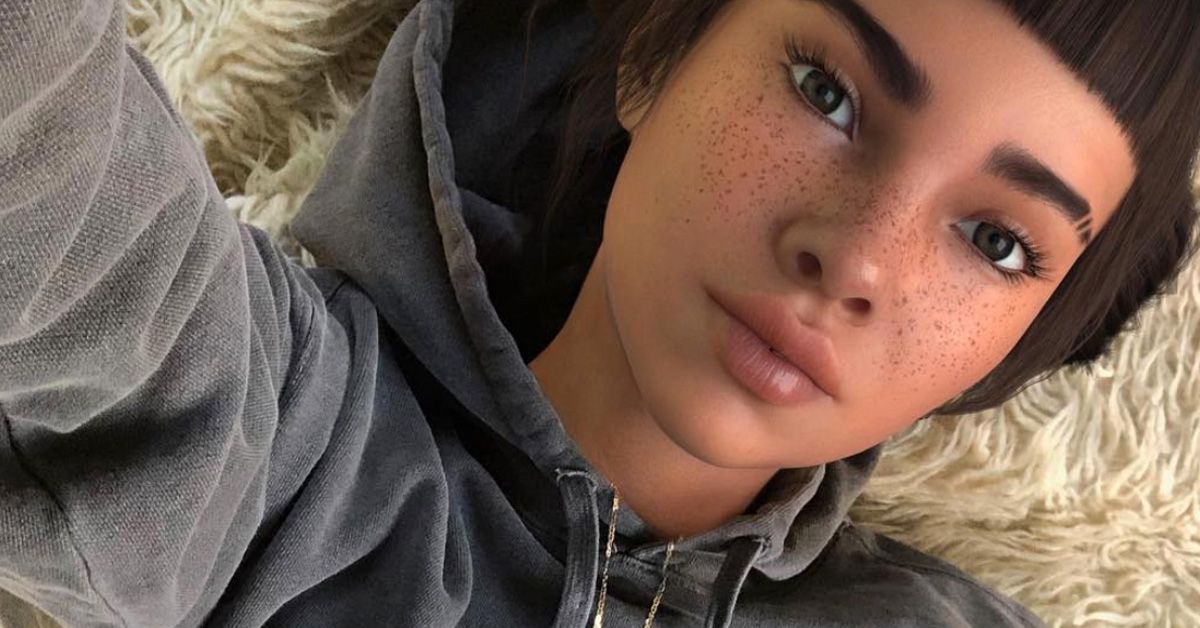From modeling to fashion to music, these CGI influencers are collaborating with the most famous brands around the world.
Virtual influencers behave like humans: they share selfies, have camera monologues, and create sponsored content. The only difference is that their images are computer-generated, and their words are pre-programmed. This means that they will not age and will remain identifiable and youthful for brands, a brilliant but creepy marketing strategy in a world seeking perfection.
Lil Miquela
On her YouTube channel, Miquela describes herself as "a 19-year-old musician, change seeker, taco truck expert, and robot". She was chosen by Time Magazine as one of the Most Influential People on the Internet (even though she's not human), and her song Speak Up has more than 4 million views. Her popularity increases with her aesthetic yet authentic Instagram posts and her active support for movements known as "Black Lives Matter". With the body of a model and the voice of a goddess, Miquela perfectly fits the teenage expectations of Hollywood-like influencers. On social media, she shares her days as a famous star but also as a teenager who embraces "being different".
Imma
Run by "Aww Inc," a virtual human agency, Imma is one of their most famous creations. The Japanese virtual model with the short pink hair went viral after many viewers didn't know at first glance that she wasn't real. Her close-up shots are of such superb quality that they allow you to see her pores and tiny hairs. The amount of detail on this girl is incredible. Known as a Japanese fashion icon, Imma's style resembles Billie Eilish: oversized clothing and garments that hide their bodies. This "innocent" approach to new audiences makes it more accessible and enjoyable for many ages, not just the young.
Shudu
This digital supermodel has featured her iconic looks in magazines around the world like Vogue Australia. During an interview with the Women's Wear Daily, Cameron-James Wilson, a British visual artist, and creator of Shudu states that she "is a digital supermodel, a very glamorous and amazing woman. But she’s 3-D". The human model alike has worked with big brands like Fendi and has been the darkest model for Rihanna's makeup line, Fenty Beauty. According to the InformOverload news channel, she became an icon in the black community. Her followers include Tyra Banks and Alicia Keys. Today, Shudu is considered an art project.
Bermuda
The Los Angeles-based model has the look of a popular American girl: blonde hair, a long ponytail like the one cheerleaders wear, a slim figure, flawless skin, and blue eyes. In her Instagram posts, Bermuda looks confident and self-sufficient. Her style is very feminine, and she likes to wear lots of pink clothes and crop tops. This influencer serves up summery vibes all year long. It seems that the virtual "it girl" will also start to dabble in music, as she created a YouTube channel to launch a Red Hot Chili Peppers version of the song "Under the Bridge", a pop adaptation of the original record with her sweet voice.
Noonoouri
The Bratz-like digital persona comes across as an activist, vegan, and environmentalist. The 18-year-old Parisian influencer was created by Joerg Zuber in 2018 and joined Instagram during New York Fashion Week. Unlike other types of virtual influencers, her appearance is very doll-like, with huge eyes and a big head. It seems that her purpose of "not trying to be human" makes her more likable than the other "robots". Noonoouri has been on the cover of Vogue China with the title "The Future Is Now". According to Condé Nast magazine, "today she is recognized by designers, models, and celebrities from Maria Grazia Chiuri at Dior to Naomi Campbell and Kim Kardashian-West".
The future of entertainment is now: a beautiful young digital woman who has behind her a team of humans studying how her audience expects her to look, act, think, and speak. Cases like Miquela and Imma are especially controversial since, at first, their creators did not clarify that they were not real, and some followers felt cheated.
In an industry that has so many expectations of celebrities, these virtual creations (most of them made by men) show a world that does not have enough of a real woman with aging and changing bodies. Many women feel isolated, pressured, and even attacked for their natural femininity. Sometimes many young girls can become hard on themselves because they see so many images of these perfect and beautifully sculpted bodies.
On the positive side, these virtual characters join good causes and collect with their music (like Miquela's case) money for foundations. They are very entertaining and enjoy doing human things like hanging out with friends and taking selfies, however, their existence leaves a question behind: Is this a way of perpetuating perfection and establishing high standards for women and young people?

